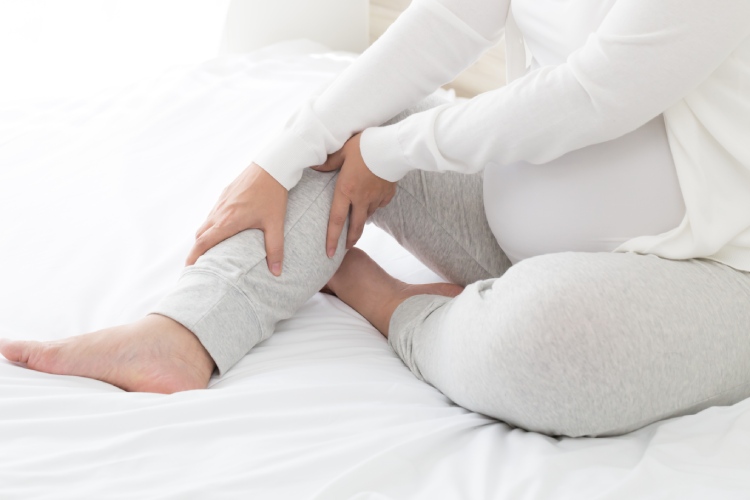cAre you looking for information on how to relieve nerve pain in your leg? Nerve pain in your legs can range in severity from uncomfortable to excruciating. Depending on the cause of the pain, as we explain on our website, “you may experience a mild ache, a burning sensation, or jolts similar to a mild electric shock.” Nerve pain “may also be accompanied by numbness, tingling, or muscle weakness in the affected leg.”
We understand your discomfort, and we want to help as much and as quickly as possible. Here are 12 steps that you can take, starting immediately, to relieve nerve pain in your leg.
Step 1: Make an appointment to talk to your doctor
The first and most important thing you can do is seek medical help from your doctor. Call to make an appointment. Diabetic peripheral neuropathy, for example, should be treated by a doctor who can help manage blood sugar levels.
Nothing you read on the internet can replace the advice of your physician. If you are in Phoenix, AZ, call to meet with Dr. Baig at Desert Spine & Scoliosis Center.
Step 2: Identify the Cause of Nerve Pain in Your Leg
With the help of your doctor, identify the cause of your leg pain. You may need help to relieve sciatic nerve pain in your leg or to relieve nerve pain in your leg during pregnancy. You may want to know how to relieve diabetic nerve pain. Some of these causes might be obvious, but other causes might be harder to find.
Step 3: Modify Activity
While you wait to see your doctor, change what you are doing that might be contributing to your pain. If you are feeling nerve pain while walking, perhaps taking a break will help. Standing might relieve nerve pain in your leg if you are hurting when you sit.
Step 4: Change Position
Try laying down if sitting causes you pain. Decompressing your spine can be beneficial for pregnant women. Changing your center of gravity may relieve shooting pain caused by sciatica.
Step 5: Try Stretches
Gentle stretches may help relieve sciatic nerve pain in the hip and leg. It will also help with general aches and pains. Stretching may help improve blood flow, and help relieve pain in your legs and feet.
Step 6: Over the Counter Pain Meds
On your doctor’s advice, try over-the-counter pain relievers such as ibuprofen or acetaminophen. Make sure that these won’t cause diabetes complications or side effects that might be bad for pregnant women.
Step 7: Take a warm shower
A warm shower can often help to relieve nerve pain in the legs. Be aware of how you are standing in the shower, and if needed, sit (a shower chair can be a big help).
Step 8: Try Heat and Ice packs
Speaking of heat, heat and ice packs will often relieve some kinds of nerve pain in the legs. If the pain is new or may be caused by an injury, try ice first. For chronic nerve pain in the legs, or to relieve diabetic nerve pain in the legs, heat can help blood flow and bring comfort quickly.
Step 9: Use a TENS unit
If your doctor approves, a mobile TENS unit may relieve sciatic nerve pain in the hip and leg. It may also help with diabetic nerve pain. The Mayo Clinic says, “TENS delivers tiny electrical impulses to specific nerve pathways through small electrodes placed on your skin. Although safe and painless, TENS doesn’t work for everyone or for all types of pain.”
Step 10: Capsaicin Cream
Many people wondering how to relieve sciatic nerve pain in the hip and leg, or how to relieve diabetic nerve pain in the legs have found what they are looking for in capsaicin cream. This over-the-counter pain reliever may help you, too.
Step 10: Epidural Steroid Injections
In many cases, you may try having a minimally invasive procedure before surgery known as epidural steroid injections; this is when medicines are administered into the epidural space between the bone and spinal nerves. This procedure can reduce inflammation and pain in the area for short or even long periods of time and it may be the thing that works for you – consult with your doctor to explore this option before surgery.
Step 12: Therapy
Your doctor may recommend the help of an outside physical therapist to help relieve the nerve pain in your legs. A few things they might recommend are:
- Physical Therapy
- Massage Therapy (including prenatal massage)
- Acupuncture
- Nutritionist consultations (especially for those living with diabetes)
Step 13: Surgery
You’ll notice that we put surgery last. That’s because, while surgery can be very helpful for those who need it, it should be a last resort in most cases. Even so, surgery can be necessary sometimes, and you should work with a trusted spine surgeon to consider the best option for you. The right diagnosis and the right surgeon can help you permanently get back to a pain-free life!



Recent Comments